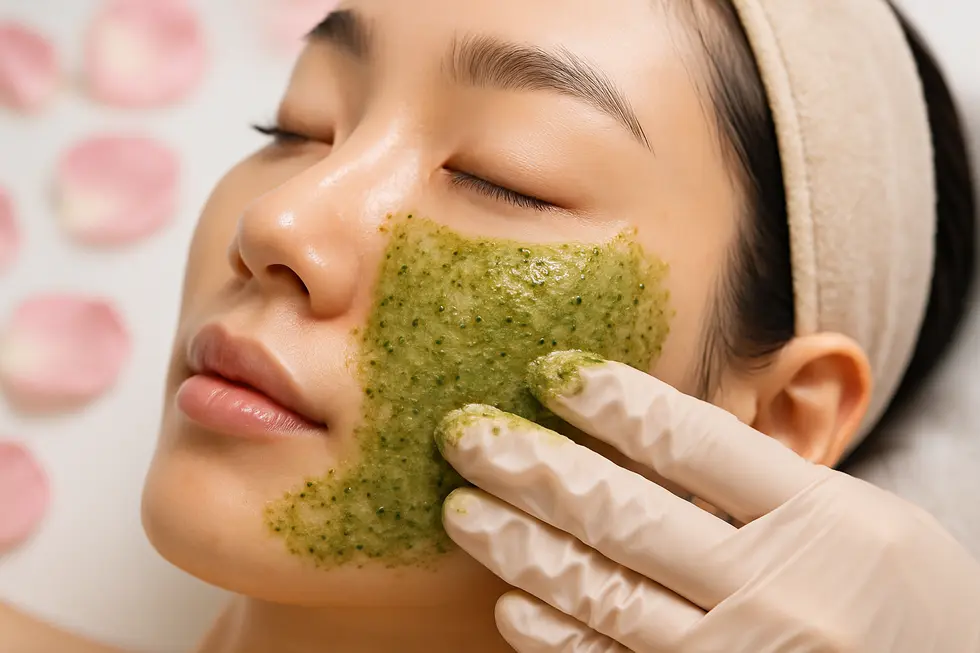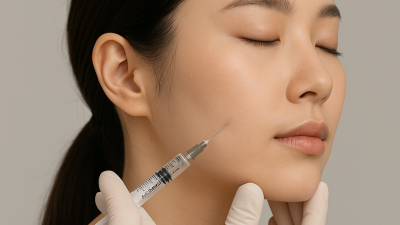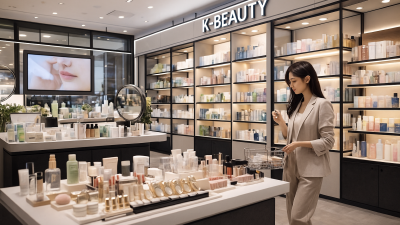
Have you ever scrolled through skincare forums and seen the term ‘rose peel’ pop up? It sounds so delicate and luxurious, doesn’t it? My first thought was of a soothing mask made from fragrant rose petals. To be honest, I was picturing a very gentle, romantic kind of facial. But as I dug deeper, I realized the most common treatment known as a ‘rose peel’ is something entirely different—and way more potent. Let’s unravel this mystery together! 😊
Contents
What is the Professional Rose Peel? 🌹
When skincare professionals talk about a rose peel, they are almost always referring to the Rose de Mer peel, a signature treatment from the skincare brand Christina Cosmetics. It’s not a chemical peel in the traditional sense; it’s a 100% natural professional peel that uses a unique combination of botanicals and marine ingredients to trigger a peeling process.
The magic ingredient isn’t actually rose, but rather coral silicates. These are essentially microscopic needles harvested from a specific type of coral. When massaged into the skin, these tiny silicates embed themselves in the epidermis. This action creates a controlled micro-trauma that stimulates a massive regenerative response from the skin. The formula also contains ingredients like Dead Sea salts and Brazilian herbs that further assist in the process.
A chemical peel uses acids (like glycolic or salicylic acid) to dissolve the bonds holding dead skin cells together, causing them to shed. The Rose de Mer peel, on the other hand, is a mechanical and biological peel. The coral silicates physically stimulate the skin from within, prompting it to shed its outer layer naturally over several days. It’s a different pathway to the same goal: fresh, new skin.
The Rose Peel Experience & Key Benefits ✨
So, what’s it actually like to get one? First, this is a professional-only treatment. You’ll start with a consultation with a certified esthetician. During the treatment, they’ll massage the abrasive herbal mixture onto your skin for several minutes. Most people describe this feeling as prickly or scratchy, like rubbing fine sand on the face. It’s not relaxing, but it is tolerable!
After the peel, your skin will be quite red and feel sensitive, almost like a sunburn. The prickly feeling can last for about 24 hours. Around day 2 or 3, the peeling begins. And I mean real, visible peeling! This lasts for about 3-5 days. During this time, you have to be very gentle and use specific post-peel products recommended by your provider.
But the results? They can be truly amazing. The benefits include:
- Treating Acne: It’s fantastic for active acne and reducing post-acne marks and scars.
- Reducing Hyperpigmentation: It helps to lift sun damage, melasma, and other forms of discoloration.
- Improving Skin Texture: It smooths out rough skin, minimizes the appearance of pores, and can soften fine lines.
- Overall Rejuvenation: The treatment boosts blood circulation and collagen production, leading to firmer, brighter, and more even-toned skin.
The Rose de Mer peel is a powerful treatment with real downtime. It absolutely must be performed by a trained and certified professional. Attempting to use professional-grade products at home can lead to severe skin damage, scarring, and infection.
| Best For ✅ | Use with Caution ⚠️ |
|---|---|
| Oily, congested skin | Very sensitive skin or rosacea |
| Acne-prone skin (Grades 1-3) | Thin, fragile skin |
| Sun-damaged or hyperpigmented skin | Those with active eczema or psoriasis |
| Mature skin with fine lines | Anyone using Accutane in the last 6 months |

Can You Do a ‘Rose Peel’ at Home? 🏡
This is a key question! And the answer is: no, you cannot replicate the professional Rose de Mer peel at home. The ingredients and technique require professional expertise. However, you can certainly tap into the wonderful benefits of rose for gentle exfoliation and skin soothing with some lovely DIY treatments or over-the-counter products!
These won’t make your skin shed, but they will leave it feeling soft, smooth, and refreshed.
📝 Example: Gentle Rose & Yogurt Exfoliating Mask
This mask uses rose powder for its soothing properties and yogurt for its natural lactic acid, a very mild exfoliant.
- Ingredients: 1 tablespoon of finely ground rose petal powder, 2 tablespoons of plain Greek yogurt, 1 teaspoon of raw honey (optional, for hydration).
- Instructions: Mix all ingredients into a smooth paste. Apply to clean, dry skin and leave on for 10-15 minutes. To remove, wet your fingertips and gently massage your face in circular motions for a minute before rinsing thoroughly with cool water.
You might also see products called ‘peeling gels’ that contain rose extract. These are gels that you rub on your skin, and they ball up with the oils and dead skin cells on the surface, creating little clumps that you rinse off. It feels like your skin is peeling, but it’s mostly the product itself. It’s a form of gentle physical exfoliation!
📝 Summary: Key Takeaways
Navigating the world of skincare peels can be tricky, but now you’re in on the secret of the ‘rose peel’! Here’s a quick recap of what we’ve learned:
- The Real Deal: The term ‘rose peel’ typically refers to the Rose de Mer peel, a professional, all-natural treatment.
- Key Ingredient: It uses coral silicates (not rose) to create micro-channels in the skin, stimulating renewal from within.
- Major Benefits: It’s highly effective for treating acne, hyperpigmentation, scarring, and signs of aging.
- Professional Only: This treatment has significant downtime and must be performed by a certified professional.
- At-Home Options: Gentle DIY rose masks or peeling gels can provide mild exfoliation and soothing benefits, but they will not cause skin to peel like the professional version.
Rose Peel At-a-Glance
FAQ ❓
Ultimately, whether you opt for a powerful professional treatment or a gentle at-home rose mask, harnessing the power of nature for your skin is always a beautiful thing. If you have any more questions, or if you’ve tried a Rose de Mer peel yourself, I’d love to hear about it in the comments! 😊




